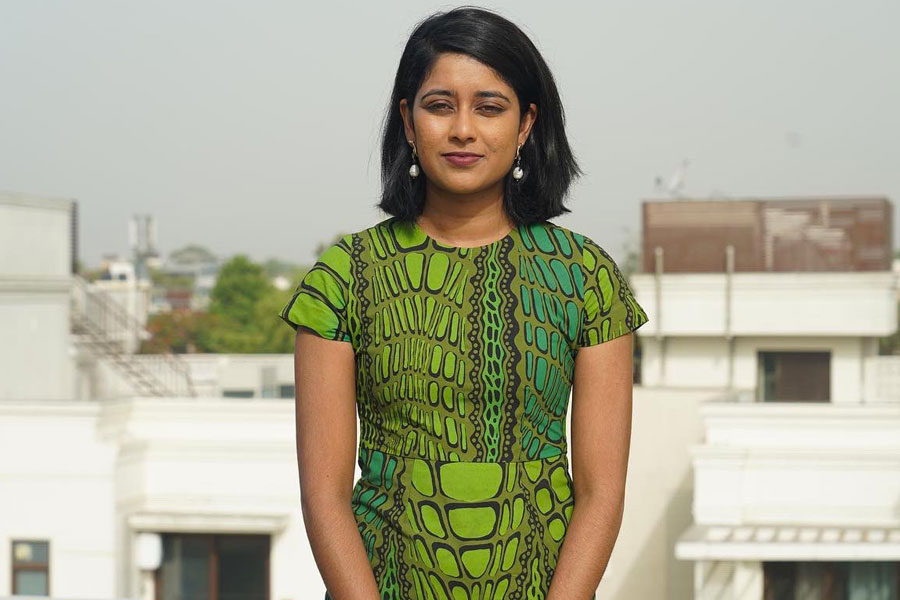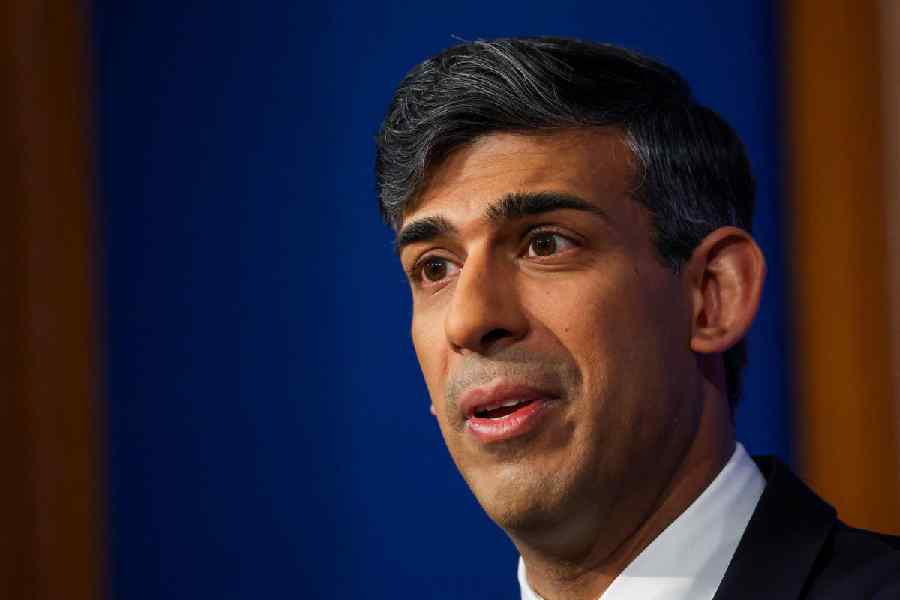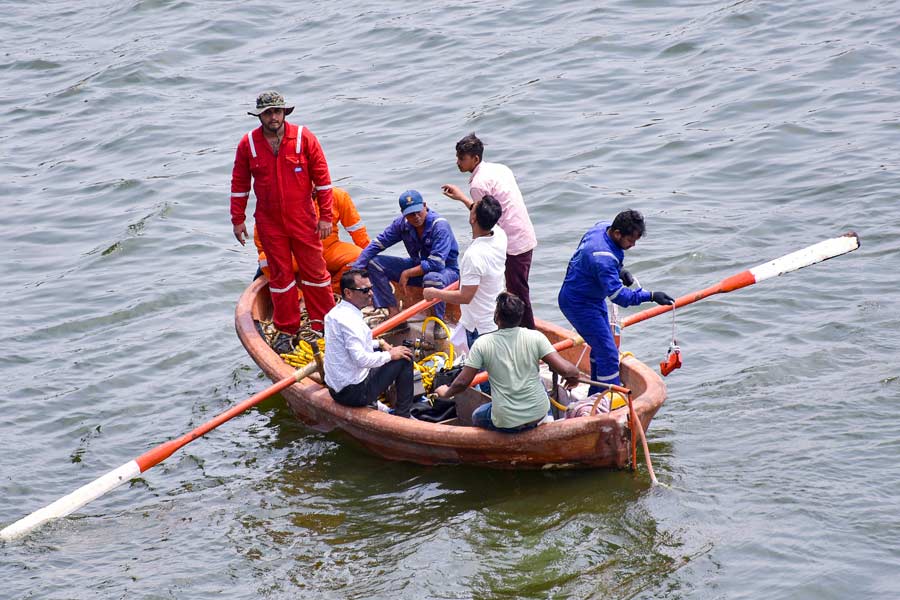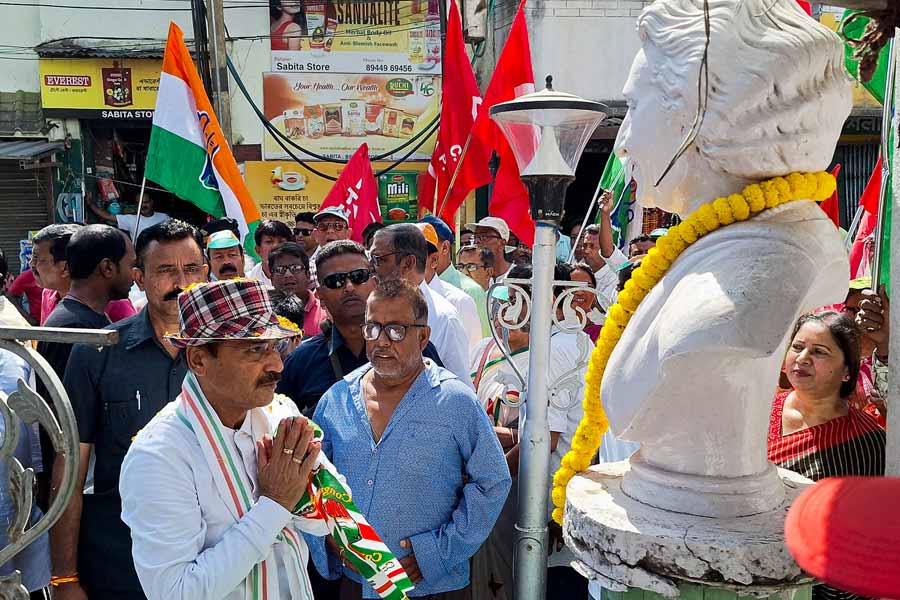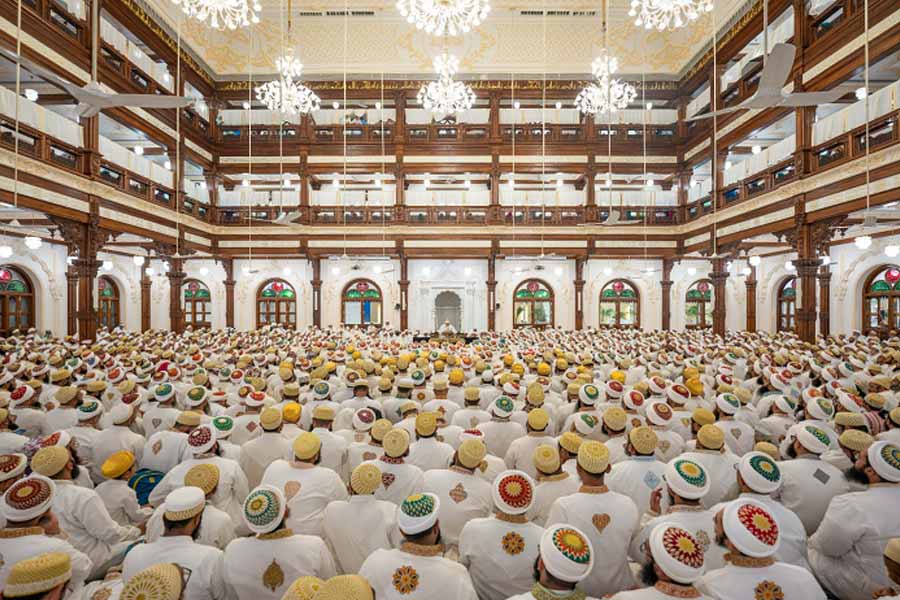Amartya Sen spoke to Uddalak Mukherjee of The Telegraph on a number of pertinent issues, including the Citizenship (Amendment) Act and the protests against it, in Calcutta on January 13
Do you think that the protests by students against the Citizenship (Amendment) Act (CAA) and the proposed National Register of Citizens (NRC) is a commentary on India’s education system, which in spite of suffering debilitating blows remains committed to India’s foundational idea?
I think that is a very interesting question. Certainly, in terms of the informed and reflected nature of the protests, they look like a tribute to the Indian education system. And to some extent, it may well be that. But that doesn’t necessarily mean that it is a tribute to what is taught. It’s a tribute to the fact that education comes not only from teaching but also from talking to other students and interacting with them. When I was a student in Presidency College in the early 1950s, I think I was learning as much from talking with others as I was by listening to lectures — although some of the lectures were exceedingly good, like those by Bhabatosh Dutta, Tapas Majumdar, not to mention Sushobhan Sarkar. They were great lectures.
But I was learning a lot from chatting with others, arguing with them and interacting. So I think that tradition of, if I may use a phrase I have used before, being argumentative is a positive feature of Indian intellectual tradition. I do not want to hold anything back from the teachers’ credit. But I think, informed politics is, in fact, a very important part of people’s education. It provides a kind of atmosphere in which people ask questions like, ‘How well is the country doing?’ and ‘Why is it that some people have such difficulty in establishing their basic human rights and fulfilling the basic requirements of good living?’
So I think it is a combination of learning from teachers and learning from talking with other students. It’s a very good question, Uddalak, and I wish I knew the full answer, but that will be my partial answer.
I’ll press on with this further. In the course of these protests, we are also seeing important shifts within this solidarity. We have under Indian conditions seen certain rigid lines — political, ideological, demographic, gender — collapse and take the form of uniform solidarity. For instance, the participation of women, and not just women who are going to be directly affected, if I may add. What do you think is important to sustain this solidarity?
Again, that is a very good question. I think at the beginning of the movement, Muslim women played a very important part. That was a part of Indian society that had particularly suffered from neglect. Muslim women were initially rather afraid and didn’t feel that they could have an effective voice. They were quite afraid of what the reaction would be in a rather punitive State. But when it came out that some of the fearless Muslim women had participated in the agitation, it was not only a great demonstration of hidden strength but also a great encouragement for everybody else. Now, I think, the unity at the moment against the CAA... against these two rules, is important because we are fighting a united assault on Indian human rights and assault on the Indian Constitution.
However, unity is one thing; single-mindedness is another. There are different problems in India. There are problems of gender discrimination, there are problems of lower-caste neglect, and, in fact outright barbaric treatment like people being forced to clear garbage with their hands. These issues are not going to go away. Similarly, the neglect of the tribals. Right now, a large part of the tribals seem to have fallen for the rhetoric of united Hindutva. But that doesn’t suit the exploited tribals well. United Hindutva upper castes haven’t treated the tribal underdogs well in the past, nor are they likely to be very supportive in the future.
And so I think there is a need both for unity and for legitimate distinctions. There is certainly, at this time, one solid challenge to the Constitution and to human rights, which demands a united resistance. Nevertheless, we have to remember the variety of problems that continue to exist related to gender, caste and tribal disadvantages, which are separate disadvantages and call for distinct initiatives. Clarity about different problems is important, even though anti-discrimination or anti-untouchability movements can be helped by — and sometimes even led by — people who do not come from the bottom layer. Gandhiji is a very good example of that. But the guiding leadership and the big commitment have to come, ultimately, from the suffering people themselves. So, yes, I think solidarity and unity are very good and we have reason to ask for their continuance, but we also have to make sure that the disparate problems are not forgotten.
I would like to take you back now to something that you’re very familiar with: two of your essays. I think they are so important in terms of the dates of publication. One is The Threats to Secular India that came out in 1993.…
That was just after the demolition of the Babri Masjid.
Yes, exactly, which is why I had that in mind. And again, 10 years later, Democracy and Secularism. Two essays after two very transformative incidents in India. What I would like to know is that reading those essays now, a continuum is very apparent. Both of these works are prescient in quality and they foresee the challenges to India’s democratic and secular ethos. What I would like to know is as we sit in 2020, do you think that what is going on around us — and I don’t mean the protests, I mean the response, the reasons for the protests — do you think it is actually the gravest challenge to India’s constitutionalism in its independent history? Something that you have already talked about before, but have you seen this dire form at any point in India’s history?
Well, not really. This is new and this is very scary. We should go back to the 1993 discussions, on the threats to Indian secularism. This is at a time when the forces of communal politics were very limited, though increasingly getting powerful. The ability to demolish the Babri Masjid was a reflection of the growing power of communal violence. But, in the early 1990s, blatant communalism was still a relatively small force. The massive power of the Indian secular establishment, including the natural inclinations of ordinary people — even of the business community — had not melted away.
But now we are in a state when a big part of it has actually melted away. And the power base of communal politics is extremely strong and their electoral victory last year — whatever it was called and we can discuss that — has made two big changes.
First, it has given the BJP and Hindutva politics of a caste-based kind an enormous power which they can exercise with little restraint. They have the entire gamut of governmental powers of repression and ability to limit the freedom of action of many people. You know they can arrest people for (what did they arrest Kanhaiya Kumar or Umar Khalid for?) “sedition”, which has got nothing to do with sedition. But given that the courts, though largely good in India, are painfully slow, the authoritarians can sustain unjust treatment for many years.
And second, it’s given a sense to the ruling Hindutva group that they have a long time — almost unlimited time — when they will be in charge of things. Until the protest movements burst recently, things looked very unchallenged.
Recently, however, there have been developments that we have reason to take to be positive things. One positive thing is the separation of the Hindutva movement from the Brahminical hold of the RSS, which the BJP follows, contrasted with Hindu politics that is not Brahminically based, like the Shiv Sena. That distinction is quite important in the context of understanding what happened in Maharashtra. It’s a kind of a revolt of a part of the original authors of Hindutva, and an assertion that it need not be all Brahminical. Because the RSS is steeped in Brahminism whereas the leaders of the Shiv Sena don’t even belong to that caste, there is a basic difference. So those who say that the Maharashtra changes are not significant, I believe they are ultimately mistaken. A split within Hindutva loyalties can be very important, especially if the non-Brahminical part starts entertaining some heretical thoughts.
There is also the question whether the ruling group has ever to worry about the terrible things they may be doing now which may be remembered later when they lose their power. And that’s the context in which Faiz Ahmed Faiz’s beautiful song, Hum Dekhenge, becomes such a positive thought. What’s the point of that idea? Faiz is saying a different day will come. Don’t assume that any nasty thing that you can do now — and you can do it with impunity — would never be brought into reckoning. The fearlessness of the authoritarian rulers makes them ruthless, and that has to be challenged. It is in this context, among others, that Faiz’s simple poem Hum Dekhenge becomes very important. It’s the cry of the underpowered who is getting strength from an attitudinal change. Faiz, with his usual range, even brought into the poem a touch of religion, nothing exclusively Islamic (as it has sometimes been wrongly interpreted). The idea of the good triumphing over evil and the evil acts being brought up for reckoning is not only a Muslim thought. It is also a Hindu thought, also a Parsi thought, also a Christian or Sikh thought. And it can also be the thought of an atheist.
It’s universal.
Indeed, it is a universal thought. Hum Dekhenge is a reminder to all potentially ruthless rulers. Even at the time of the Second World War, the Fascists and the Nazis operated assuming that nothing is going to change. And what is very important as a reminder is to say, ‘That’s not the case. Everything that you do will be brought into reckoning.” This is, in fact, a necessary thought for giving an adequately broad perspective, both to the ruler and the ruled. It is particularly important to remember today since despite the excitement of the protests, the fact is that barring some major surprises the government is going to be there for another four-and-a-half years.
I would like to combine two questions here because they look at one thing. I found it really interesting that in your essay, The Threats to Secular India, you mention how the Hindu Mahasabha had been far less successful than the BJP in terms of consolidating the Hindus. And, here today in 2020, obviously the BJP has been extremely successful on that count. You have also identified three clear threats — communal fascism, sectarian nationalism and militant obscurantism. But given how majoritarian politics is being played out in India, do you think it is time to revise this causal list… would you like to add something?
Well, I think what has happened is a kind of gradual decline of the secular commitment of the population at large, which restrained the Hindu Mahasabha greatly. Remember that in 1996, the 13-day Prime Minister, Atal Bihari Vajpayee, was trying to get partners and no one was willing to join. Things have changed now, many political groups are keen on joining them. In fact, every time you hear of defection, they seem to go towards the BJP. That’s a big change and that change is really a very big factor. That change is not, as some people claim, a victory of the BJP’s intellectual argument. It is a change in what was earlier regarded as a “no-no” by the Indian masses. So the Hindu Mahasabha never had parliamentary seats and the Jana Sangh had two seats, I think.
Yes, in 1984.
And so that has changed and what’s happening now is an attempt to reverse that change and that’s why the large volume of protests coming especially from the young could make a difference. Now that doesn’t mean that the Hindutva groups will be devoid of support --- they have their own coterie. But as long as that’s made into a kind of coterie as with Donald Trump supporters, as opposed to the general population, there would be a big hope there. And that combined with reminding people about the fact that another day may come when all these will be under reckoning — that is the Hum Dekhenge theme — could make a difference. It is really important to understand that the BJP’s success has been not so much to win an intellectual argument but to win an attitudinal conflict.
Consider the odd political arguments used by the erstwhile Left in West Bengal and Calcutta. I was told that the Left-wing activists wanted to support the BJP in order to deal with Trinamul and then hope that a day will come when the Left will come back to power by eventually defeating the BJP. Now, that’s a silly thought. But aside from being a silly political reasoning, it is also morally unacceptable — it is an acceptance that it is okay to be with the BJP and the communal dividers, no matter how they treat the different religious communities in India. That’s not a Left position in any way, even tactically.
I’ll go to something else, something that struck me and this happened at The Telegraph debate recently. One of the leading ideologues from the Right wing happened to mention that India’s civilisational ethos happens to transcend the Constitution. Do you read this as a shift or a new line of thrust from a political philosophy that is majoritarian and, if yes, what do you think is the reason behind this?
I don’t think there has been such a shift. I mean there are two things here. First of all, I don’t think Indian civilisational background is one which is contrary to the Constitution. In fact, if there is anything that I tried to say in my book, The Argumentative Indian, it was about that; that there is an argumentative tradition and not just tolerance — and a tradition of cooperation that existed earlier and, you know, if you think about so many things that were jointly done, from the great buildings in the Mughal period in which there was a great deal of architectural wisdom coming from the Muslim traditions to the rest of India and at the same time the use of a local know-how, partly Hindu know-how, to combine with that.

Faiz is saying a different day will come. Don’t assume that any nasty thing that you can do now — and you can do it with impunity — would never be brought into reckoning. The fearlessness of the authoritarian rulers makes them ruthless, and that has to be challenged. It is in this context, among others, that Faiz’s simple poem Hum Dekhenge becomes very important. It’s the cry of the underpowered who is getting strength from an attitudinal change
Amartya Sen
Similarly in religion, there was Kabir and Dadu and Meera Bai and so on. And also in painting and other forms of art and in music, and, of course, literature. So the idea that the civilisational mode favoured a majoritarian view, to which the Constitution was hostile, I don’t think is correct. I don’t know who this wise guy is who said the opposite but the Indian Constitution reflected in many ways the long-going tradition of India. Of course in the political context, it certainly had a strong feeling of being based on Congress thinking, but it wasn’t only that. I mean when there were movements like that of Netaji Subhas Chandra Bose, there wasn’t any question that there will be no tolerance at all of majoritarianism, it was all going to be all-India-based, whether you’re Hindu or Muslim or Sikh didn’t make a difference.
And so I think that was a big tradition. Actually even Jinnah had some difficulty in having to reconcile that with his demand about fairness to Muslims, but the fact is that he himself, of course, reflected a combined Indian culture, whereby his personal behaviour was very much that of a Bombaywallah. And actually I agree with Ayesha Jalal’s very deep analysis that he wasn’t really looking for a completely separated Pakistan, which is in fact what happened. I really don’t see much merit in that argument at all.
You’ve mentioned in many of your works, lectures about how democracy, I mean ideal democratic conditions, have a strong link with the economy and are conducive to economic growth. One great example in these two essays that I referred to earlier is a comparison between Kerala and China. What I would like to know is in the course of your vast research experience, can we narrow down to a similar coefficient between communalism and economic growth?
I don’t see any specific connection there. Actually, my position on democracy and economic growth isn’t that democracy encourages economic growth. It is mainly that the idea that democracy will make growth difficult is not correct. I mean these beliefs were mostly based on the fact that Singapore and Hong Kong were doing very well and these were not democratic and, therefore, isn’t it the case that democracy is hostile to economic growth because India was doing badly? But then it turned out that India wasn’t doing so badly after all. And as we look at the present tradition, I think the rise of Indian growth performance — before the recent decline — was consistent with democratic politics.
I don’t see that there is anything in communal politics that helps economic growth. And so I think that that anti-democratic argument does not hold any water at all. And there were some people who were accepting the BJP on grounds that it will be very good for economic growth but I think their expectations have been disappointed. There was no reason for them to have those expectations anyway.
You have also identified the weaknesses of majoritarianism…. You have pointed out the diversity of India’s demographic and so on, and the other point you also made is that Indian democracy has been rather timid in spirit. Given the existential threat to Indian constitutionalism now and the concerns that you have been raising — perhaps one of the few consistent voices over such a period of time — what I would like to know is, do you think that the essential challenge still remains proliferating these ideas at the ground level in a nation with a literacy rate close to 70 per cent? I am asking you this because one of the other really important things to remember is your point about the proto-Hindutva constituency — you make a distinction. Do you think that the way forward could also be about the strategic weaning away of this particular constituency that is aligned with political majoritarian forces?
Yes. I think one of the problems with Indian democracy, as Ambedkar noted, was — possibly in his case he was looking forward and he was afraid — that there could be a weak kind of democratic politics without addressing economic inequalities of the country related to caste and tribe or religion and also other divisions that exist. But democracy in principle can take them up very well.
Institutions are really important. Think of the Left wing in Britain in the early 19th century when it was almost entirely dependent on Whig support or the Liberal Party. Its force was quite limited. The big thing that the Labour Party did — which, of course, many people thought was not adequate (but it certainly was a big change) — was a move in the direction of seeing things in terms of a united labouring class and a united use of the Union movement. How well this promising framework was applied was not clear. And certainly, in recent years, the Labour Party has found such lack of clear thinking that one doesn't know who to give credit to. But I think that unity of the deprived, which the Labour party provided in nineteenth-century British politics, is something that India needs now What is needed is not a unity around religion, but unity around the suffering of the people and the inequalities that the society has established.
The hope is that there would be a kind of closing of the gaps between different deprived groups and their jointly fighting the inequalities and exploitations established by the upper classes. That was Ambedkar’s dream, which didn’t, alas, quite happen.
The final question builds on something that you have made succinctly clear. Democracy is also about the vigorousness of institutions. Do you have something specific to say regarding the quality of institutional democracy in terms of India’s courts and the media?
Well, this is a really difficult issue and it is a very good question, again. One that I try to reflect on, not with great success. Because in some ways, there is no reason why a party that would stand for the deprived — which can have a majority -– cannot stand up to the manufactured unity of the caste-divided Hindus, from Brahmins to the untouchables (or ‘ex-untouchables’). And so if there is a failure there, it is an institutional failure.
Now, when there was a common enemy like the British, it was easier to unite. We also had leaders like Gandhiji to deal with it and others too, you know, like Nehru and Netaji Subhas Bose, they were committed to the same thing. But none of them made an institutional transformation that could go beyond fighting the British into fighting the upper classes on behalf of the majority of the lower classes. There is an institutional gap there. Now, to what extent this could be met or reversed by a broadened anti-communal movement is to be seen.
I think the newly emerging student leaders may establish themselves both as standing for the deprived and the lower castes, and also as standing against religious sectarianism. Can they lead a movement that is institutionally successful and democratically powerful? There are big problems to overcome. Kanhaiya did not fare very well in the elections and the division with the RJD did not help. But is there hope there? Well, it can be achieved and it will be very important to achieve.
There is also the question of personal leadership that is being put again and again, like who is going to lead the Congress and whether Rahul Gandhi, clearly performing better than earlier, is able to do what is needed. How can the performance of the existing leaders be improved, and whether there could be new leaders like Sachin Pilot and others emerging within the Congress. Such questions arise for all the already active parties.
There is another issue not unconnected with it — whether the Left, which got completely decimated by extraordinarily under-reflected political policy, could have a quick reversal. With old leaders or new, can there be a real Left revival? We have to see. To the extent that the question that you have stated reflects that it’s very important to know what the institutional basis of these movements will be. I think it’s an extraordinarily important question. I don’t have any great gung-ho optimism here. But nor am I incurably pessimistic.
It really depends on how things develop, but also on how the emerging young leaders — both women and men — mature. When I talk with some of these leaders, including Kanhaiya, I have been very impressed by their determination and by the fact that their thinking seems a lot clearer than the old rhetoric of established old politics.
Consider the broad-based thinking of emerging young leaders about the requirements of Left politics, with a focus on the underdogs of society, but standing firmly against communalism at the same time, and also dealing with the Congress and other parties with a kind of strategic intelligence and broadmindedness that politics demands.
We need this pragmatism — and most important, we need clarity of thought.





